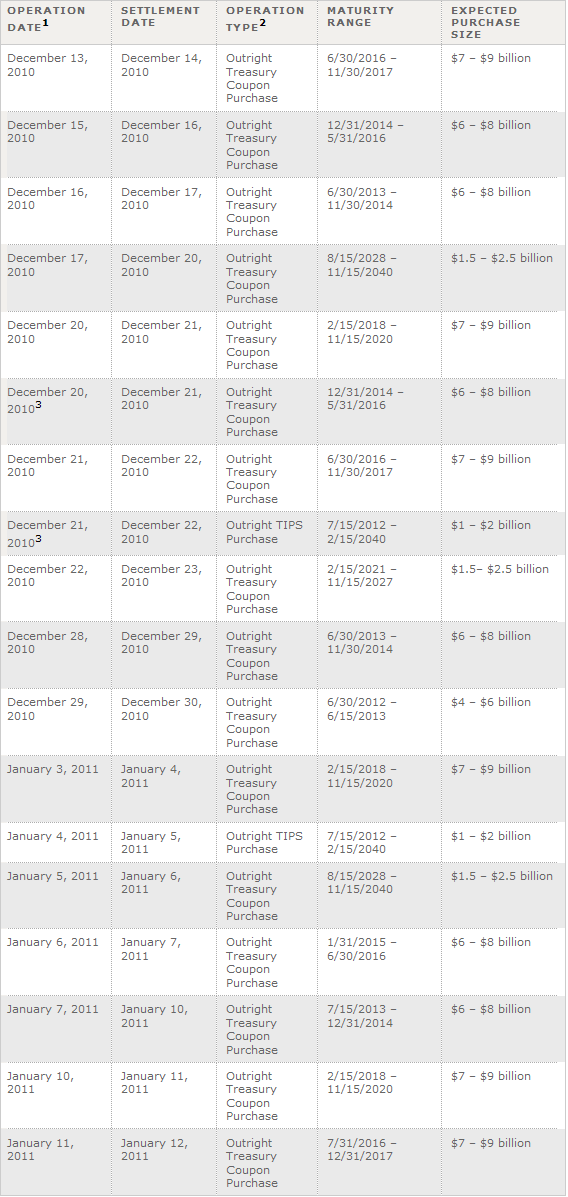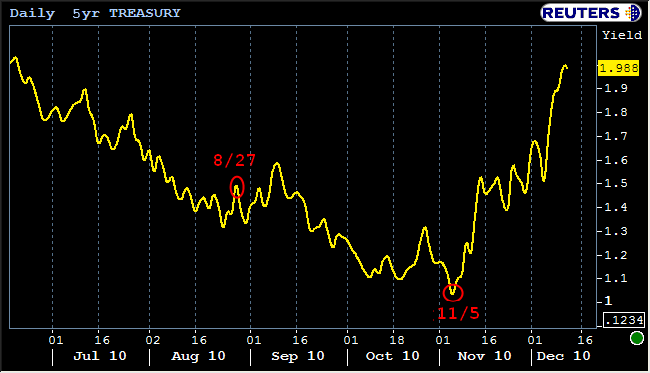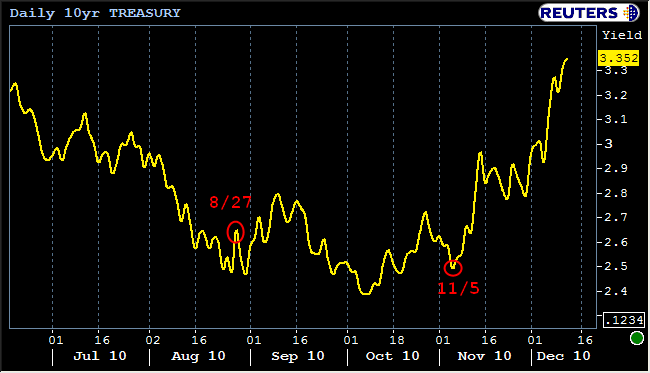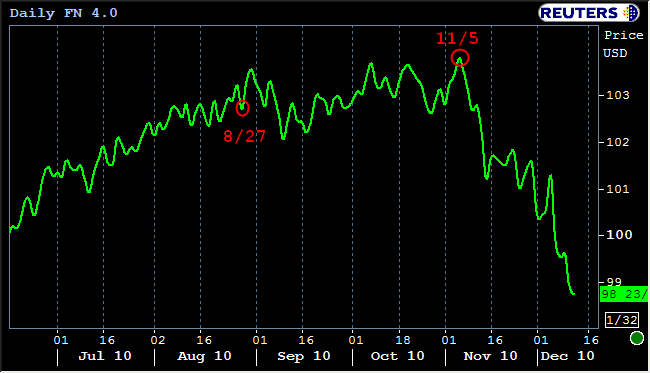The Federal Reserve has updated their QEII asset purchasing schedule.
From December 13th to January 11th the New York Federal Reserve's trading desk will purchase an estimated $105 billion Treasuries and Treasury inflation-protected securities. These purchases will be spread out over 18 operations.
Across all operations in the schedule listed below, the Desk plans to purchase approximately $105 billion. This represents $75 billion in purchases of the announced $600 billion purchase program and $30 billion in purchases associated with principal payments from agency debt and agency MBS expected to be received between mid-December and mid-January.


The Fed will continue to focus their spending on a maturity range that is relevant to rate-sheet influential MBS coupons. The extent to which these purchases are/were already baked-in to prices remains to be seen and is a topic of ongoing debate. Some speculate that yields in both treasuries and MBS would be significantly worse at the moment if it weren't for these market operations taking down this debt. As for "significantly worse," although it is not in response to this particular release, the 6 month charts below will show our levels after this morning's ugliness, but their purpose is to show how much rates rallied on QEII front running ("baking-in") starting with Jackson Hole on August 27th 2010, as well as how much of that rally has been given back since the release of the October Employment Situation Report, which printed just two days after QEII was announced on 11/3.



The Fed's QEII coupon lifts are having a clear impact on the bond market this morning. A short seller dominated rates market pressured MBS prices lower overnight all the way into the equity open. However as the scheduled QEII coupon pass approached, short covering sparked a modest stabilization in rates. The Fed bought $7.8bn in today's POMO. This was supportive and it intensified short covering. The bond market continues to rally in the aftermath of today's POMO. Flows have shifted firmly toward buying which indicates a modest amount of outright demand is adding to the short covering bid. REPRICES FOR THE BETTER ARE POSSIBLE FROM LENDERS WHO TOOK DOWN INDICATIONS EARLY IN THE SESSION





